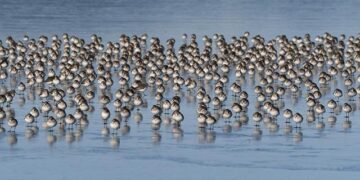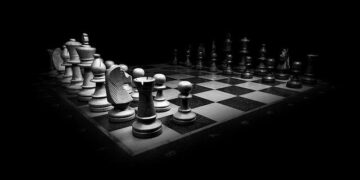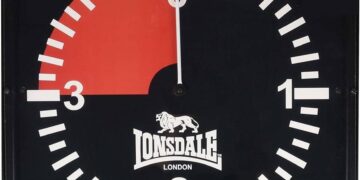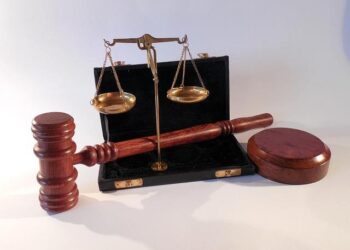History & Culture
The first lady spent several months out of the public eye after the death of her infant son, Patrick Bouvier Kennedy. The tragedy brought her and the president closer together.
ByMelissa Sartore
Published November 3, 2023
• 6 min read
On August 7, 1963, First Lady Jacqueline Kennedy accompanied her daughter Caroline to a riding lesson off the coast of Cape Cod, Massachusetts. Just after they arrived, Secret Service agent Paul Landis remembered the first lady knew something was wrong. He says she asked to go back to the house, “right now.”
The then-pregnant first lady went into labor almost six weeks early. Despite desperate attempts to save her son Patrick Bouvier Kennedy’s life, he died two days after he was born.
(JFK: One Day in America premieres November 5 at 8/7c on National Geographic, and streams November 6 on Disney+ and Hulu.)
The following days, weeks, and months would be traumatic for both Jackie and President John Kennedy as they experienced both the birth and death of their child. What neither knew, however, was how the events of August 1963 would affect their relationship. One tragedy strengthened the bond between the Kennedys. A few short months later, the president’s assassination would forever tear them apart.
Losing Patrick
Patrick’s death was not the first loss for the first family. In 1955, Jackie Kennedy experienced a miscarriage and, one year later, gave birth to a stillborn daughter named Arabella. Caroline and John Jr., were born in 1957 and 1960, respectively.
After the first lady went into premature labor on August 7, 1963, she was taken by helicopter to Otis Air Force Base. Because she had given birth to their son, John Jr., early, precautionary accommodations had been prepared at Otis. Additionally, her obstetrician, John Walsh, and the White House physician, Janet Travell, were with her to Cape Cod at the president’s urging.
While the first lady received medical attention, the president was notified she had gone into labor around 11:30 a.m. When Patrick was born via emergency cesarean section shortly before 1 p.m., the president was still en route. Patrick, who weighed 4 lbs and 10.5 oz, was placed in an incubator because the medical staff was worried about his breathing.
Because Patrick’s condition was dire, the newborn was transferred to Children’s Hospital in Boston, accompanied by the president. The first lady remained at Otis. Efforts to save Patrick were for naught: he died at 4:44 a.m. on August 9. The first lady was told soon after, and the president returned to Otis to be by his wife’s side.
Jackie Kennedy did not attend funeral services for her son because she was still recovering from surgery. After she was released from the hospital, the first lady returned to the Kennedy compound at Hyannis Port.
In late August or early September, she asked Secret Service agent Clint Hill if he would like to go to Greece with her. She told Hill that she was going with her sister, Lee Radizwell, and her husband, Polish diplomat Prince Stanislaw Albrecht Radziwell. The group would spend weeks aboard Aristotle Onassis’s yacht traversing the Greek isles. President Kennedy supported the idea of the trip, despite concerns by his staff that there could be political repercussions. The first lady left on October 1, 1963.
Jackie Kennedy visited Greece and Morocco in October, returning to Washington, D.C. on October 17, 1963. Still grieving, the first lady made it a point to acknowledge that her husband was “really nice and understanding” during a dinner with friends upon her return. President Kennedy teased her, stating, “Maybe now you’ll come with us to Texas next month,” at which point she wrote in her appointment book that she would, indeed, go on the trip.
The journey to Dallas
The weeks leading up to trip to Texas, the first lady spent much of her time focused on the family’s newly built home, Wexford, located near Middleburg, Virginia. She was present at functions at the capital, including her first appearance at a White House event on November 13.
In a phone conversation with her friend Letitia Baldridge around the same time, the first lady mentioned “I’m going campaigning to Texas with Jack next week, and I’m going because I want to.” Baldridge noted a “note of genuine happiness” in her friend’s voice. Baldridge also said that this was how she “suddenly knew that her marriage was going well.”
Others around Mrs. Kennedy and the president said that their relationship was in a very good place. Hill indicated that Patick’s death “changed everything” and that “the other agents and I noticed a distinctly closer relationship, openly expressed, between” them. Press Secretary Pierre Salinger attested to this, noting, “The White House had brought about a closeness in their relationship, a wider understanding of one another. The death of their baby brought them even closer.”
As Jackie Kennedy prepared to go to Texas in November 1963, she made a list of items to pack, including her favorite jewelry and handbags. The trip was a bit of a re-emergence for the First Lady who had not traveled since the loss of her son months earlier. It was also an important outing for President Kennedy as the election of 1964 loomed.
(The Black designer who created Jackie Kennedy’s wedding dress.)
According to secret service agent Clint Hill, while the first lady didn’t like politics, she was determined to “do everything she could” to help her husband get reelected. Texas was a key campaign stop since the president only narrowly won the state in 1960. He believed having the first lady by his side would help him with potential voters.
The first lady’s dedication to her husband was not new, but their relationship changed in the months since Patrick’s death. In fact, the pregnancy seemed to breathe new life into the couple’s relationship. By November 21, 1963, when the president and first lady left for Texas, their relationship was imbued with optimism. That same optimism for their marriage was not unlike the overall hope felt around the world for President Kennedy’s political future.
The extent to which the closeness between the Kennedys would have lasted will never be known. Shortly after 12 p.m. the following day, President Kennedy was assassinated as he rode in a motorcade through downtown Dallas, Texas. Despite navigating her own loss and trauma, she stood up in the face of tragedy and exhibited poise that helped the nation grieve. She became a symbol of opportunities lost but also a reminder of perseverance.
>>> Read full article>>>
Copyright for syndicated content belongs to the linked Source : National Geographic – https://www.nationalgeographic.com/history/article/jackie-kennedy-jfk-patrick-mourning-dallas





























